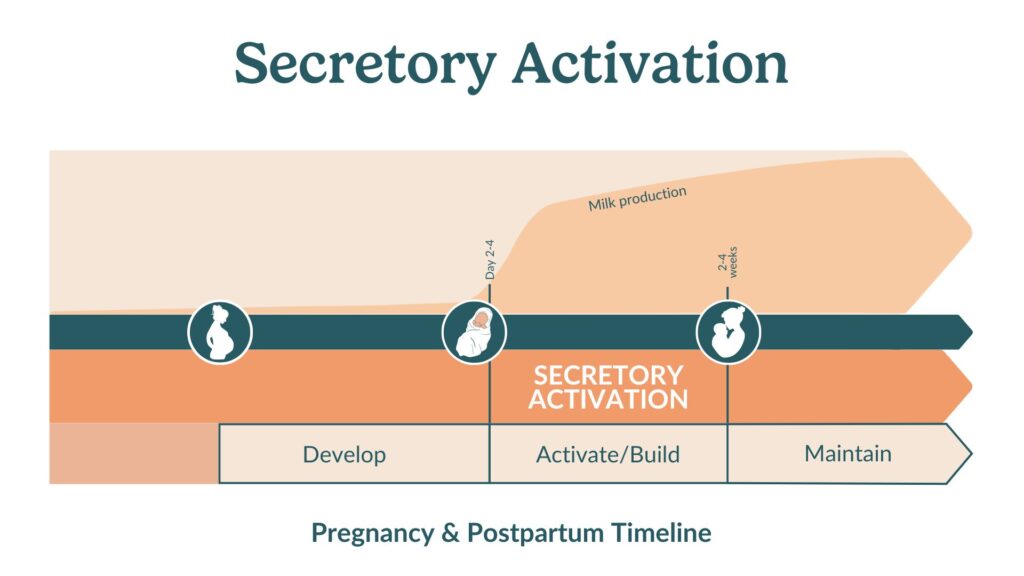secretory activation

Secretory activation
Secretory activation, also known as lactogenesis II, is the process that starts your milk production to increase after you give birth.
This phase typically begins about 2-4 days postpartum, triggered by hormonal changes, particularly the sudden drop in progesterone levels after the placenta is delivered. This process transforms the small amounts of colostrum you produce in the first few days into mature milk to nourish your baby.
What to watch out for
During secretory activation, there are some common signs and potential issues to be aware of:
- Breast changes: Your breasts will feel fuller, firmer, and may be slightly tender as they begin to produce more milk. This is a normal part of the process.
- Engorgement: Your breasts might become overly full and uncomfortable if your baby isn't feeding frequently enough or effectively. To prevent or relieve engorgement, nurse your baby often, ensuring they have a good latch. Hand expressing, breast massage, and breast gymnastics can also help relieve discomfort. Learn more about engorgement and how to manage it.
- Signs of low milk supply: While many mamas produce enough milk, some might experience low milk supply. Signs include your baby not gaining enough weight, fewer wet diapers, and continued hunger after feedings. Frequent breastfeeding and ensuring a proper latch can help boost milk supply. Consult a lactation consultant if you have concerns. Read about signs of low milk supply and ways to increase your supply.
If you experience severe pain, a persistent low milk supply, or signs of infection such as fever or redness, seek help from a healthcare professional or lactation consultant.
Physical limitations or health circumstances
Certain health conditions or circumstances might affect secretory activation:
- Previous breast surgery: Surgeries like breast reduction or augmentation can impact milk production depending on the type of surgery and the techniques used.
- Hormonal imbalances: Conditions such as polycystic ovary syndrome (PCOS) or thyroid disorders can affect the hormones involved in milk production. Managing these conditions can help improve milk supply.
- Diabetes: Mamas with diabetes might experience delayed onset of milk production. Monitoring and managing blood sugar levels during pregnancy and postpartum can support milk production.
- Insufficient glandular tissue (IGT): This condition, where there isn't enough milk-producing tissue in the breasts, can result in low milk supply. A lactation consultant can provide strategies to maximize milk production and supplement if necessary.
Other terms
- Colostrum: The first milk you produce, rich in antibodies and nutrients, which transitions to mature milk during secretory activation.
- Engorgement: When your breasts become overly full and uncomfortable, a common issue during the early days of milk production.
- Let-down reflex: The release of milk from your breasts triggered by your baby’s sucking, which can be influenced by hormonal changes during secretory activation. Learn more about understanding breastmilk let-down.
- Prolactin: The hormone responsible for stimulating milk production, which increases significantly during secretory activation.
- Oxytocin: The hormone that causes the muscles around the milk-producing cells to contract and release milk, playing a key role in the let-down reflex. Read about the wonders of oxytocin in breastfeeding.


